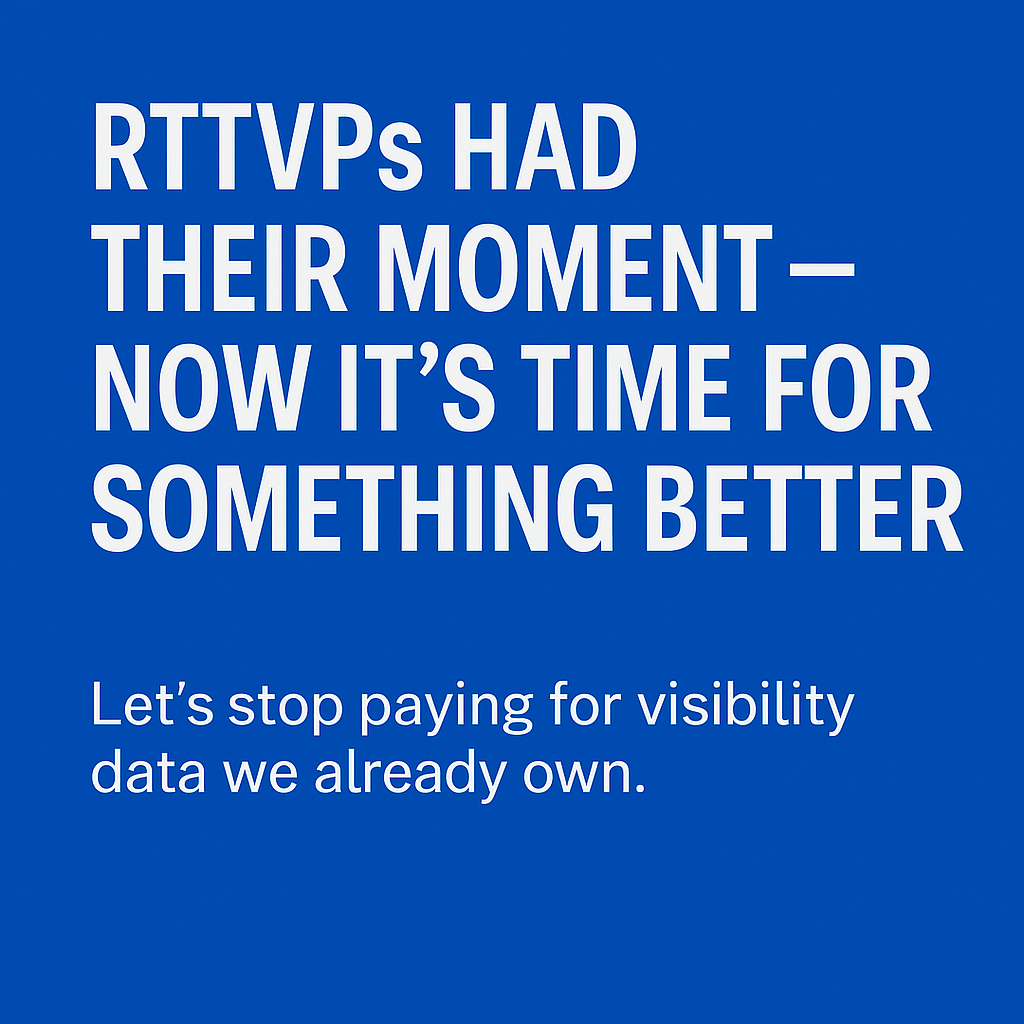
I’ve never been a fan of RTTVPs. In fact, I’ve always seen them as a stop-gap solution at best.
Bottom Line Up Front:
We don’t need a third party to take data we already own and sell it back to us. Carriers own their ELD data. They can and will provide it directly to their customers—just like it works in parcel and LTL. It’s time trucking followed suit.
A Little Background
When electronic logging devices (ELDs) became mandatory a few years ago, nearly every truck on the road was suddenly equipped with GPS and telemetry. There are over a thousand approved ELD devices—ranging from cell phone apps to robust fleet systems from companies like Omnitracs, Samsara, Trimble, and Verizon.
Carriers use these devices to manage hours-of-service, pay, dispatch, and more. Modern carriers know a lot more than just where their trucks are—they know what’s happening with every load, in real time.
How RTTVPs Work
RTTVPs bridge the gap between a shipper’s TMS and the carrier’s equipment, as getting that ELD data from the specific truck to the customer’s TMS is difficult. That’s where the RTTVP comes in. Yet there are challenges—for example, one is identifying the exact piece of equipment (truck) moving each load. Once a carrier accepts a load, they’re supposed to send the ELD identifier for the specific truck back to the shipper’s TMS. The TMS then sends that ID to the RTTVP, which starts tracking the truck.
RTTVPs use what they call a “multi-source data approach”—pulling GPS pings from ELDs, carrier APIs, mobile apps, and geofences to infer what’s happening. They often layer in weather, dwell patterns, and AI-based ETA predictions to fill in the gaps.
The result? Lots of moving parts, lots of assumptions, and plenty of failure points.
For shippers, the biggest failure is simple: tracking the correct piece of equipment. ELD assignments change frequently, and most carriers still manage this manually. Add in brokers and 3PLs—yet another degree of separation from the actual truck—and things get even messier.
There’s a Better Way
Let’s cut out the middleman. Ask your carrier to send you real-time status directly.
Carriers already own the data. Let’s stop guessing based on GPS pings or geofence assumptions—and instead get actual loaded/unloaded events straight from their in-cab and fleet systems.
It’s not revolutionary. Parcel and LTL already do it: status updates, pickups, deliveries, ETAs. TL carriers can—and should—do the same.
Sure, TL is more fragmented. Herding cats, as they say. But that doesn’t mean we should keep buying hay for the wrong barn. It’s 2025—modern fleet systems know where their trucks are. It’s not a heavy lift asking carriers to provide this data to their customers. RTTVPs are allowing some carriers to skirt this responsibility, but that’s a stopgap our industry is closing.
What We’re Doing at 1Logtech
At 1Logtech (1LT), we’re helping shippers bring their TL carriers into visibility compliance—without relying on an RTTVP. Our platform makes it easy to connect directly to any TL carrier, provide real-time feedback, and close the loop on compliance.
We give carriers tools like mini-portals or self-updating options, and we help shippers develop clear SOPs so everyone knows what’s expected.
Each morning, we even email carriers a list of live loads missing status updates—making it easy to fix issues before they escalate. In short, we help make the carrier responsible for visibility—not some third party you have to hire.
The Result:
Better visibility. Direct from the source. No RTTVP required.
If you’re tired of paying for data your carrier will give you freely—and ready to take control of your visibility—let’s talk. We’d love to show you how real-time status directly from carriers is faster, cheaper, and just… better.
JP Wiggins
Co-Founder, 1Logtech